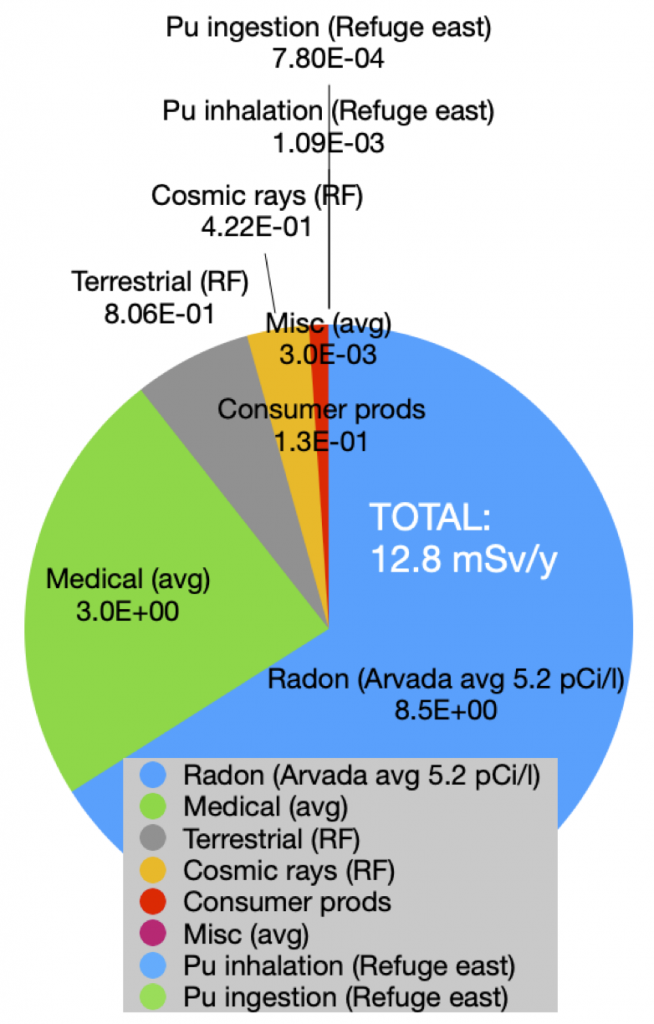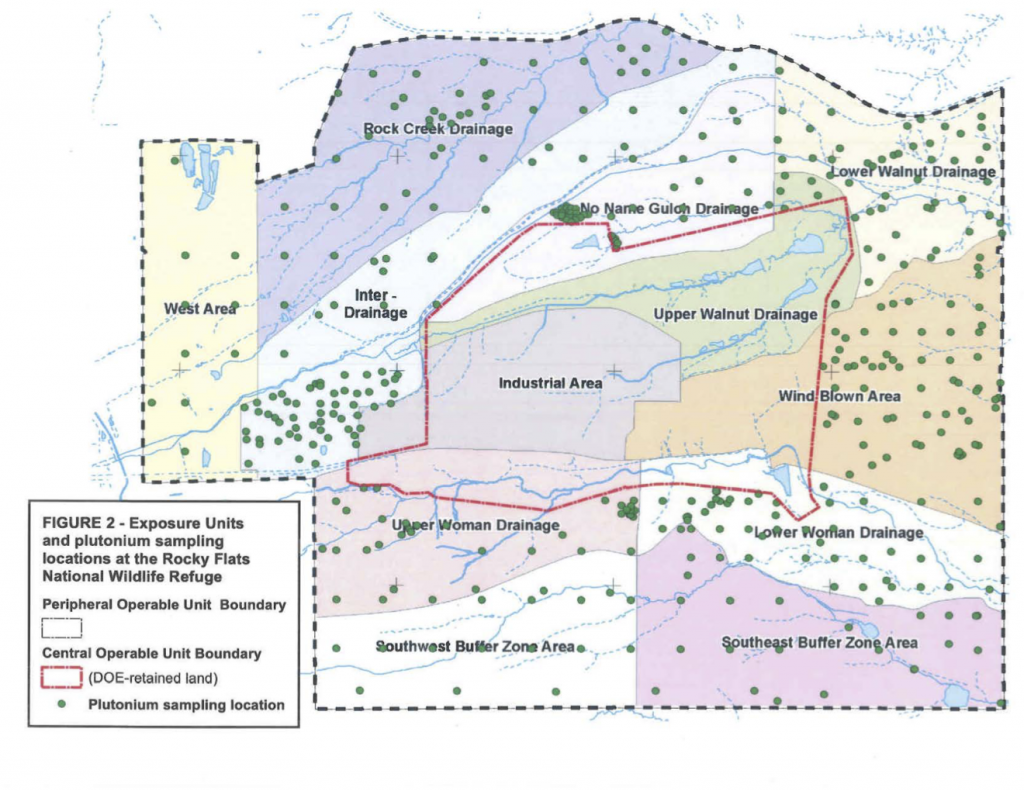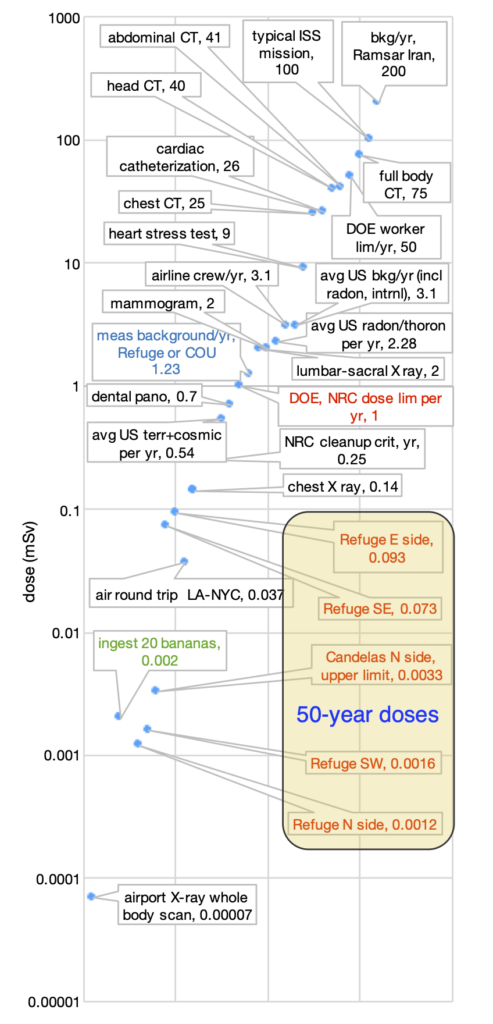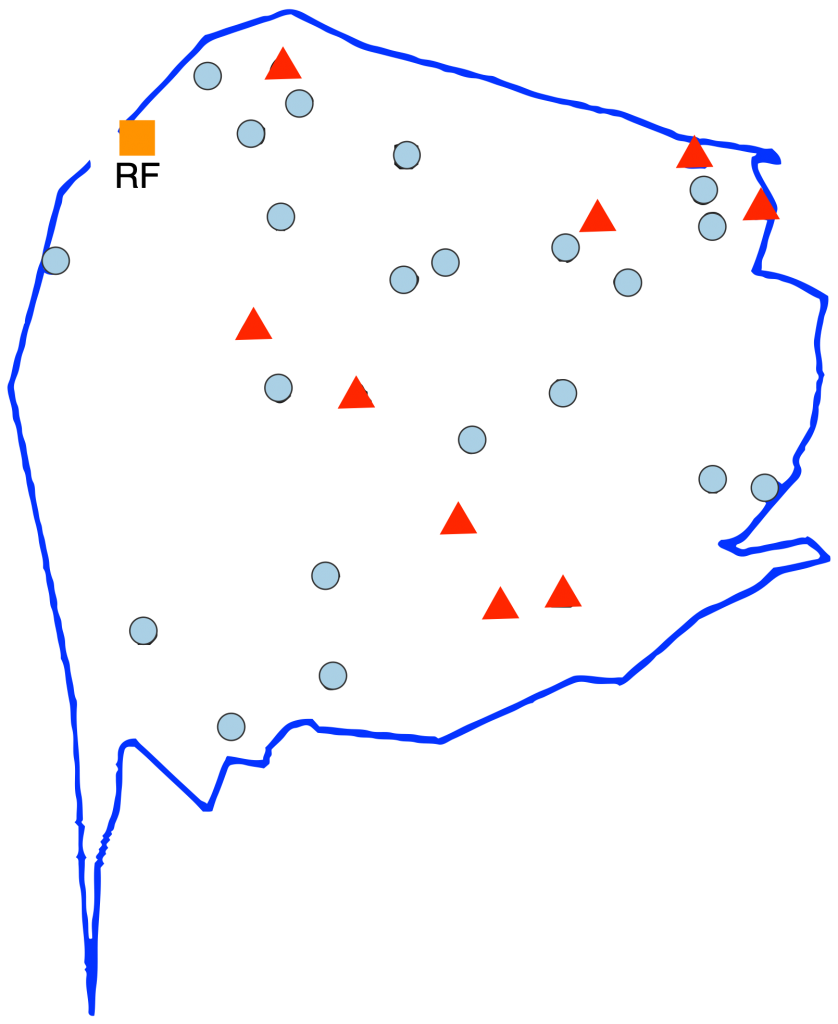
“The good thing about science is that it’s true whether or not you believe in it..”
Neil deGrasse Tyson
“The amount of energy needed to refute bullshit is an order of magnitude bigger than that needed to produce it.”
Alberto Brandolini, 2013
About us
Dispel the nonsense
If you live in Candelas, Leyden Rock, Leyden Ranch, Whisper Creek, Five Parks, or Skyestone, you have already made your peace with the legacy of the Rocky Flats plant (and voted with your feet). Yet you will encounter plenty of misinformation by innuendo, dark hints about the dangers of developing the areas around Rocky Flats, public access to the Rocky Flats National Wildlife Refuge, and about the risks associated with building the Jefferson Parkway.
Who cares?
Some site visitors may think the issue of Rocky Flats safety is settled. It is (and there is no measurable health impact on anyone, after decades of looking). Some may dismiss anti-Refuge groups via the maxim “Ignorance is its own punishment”. Well, maybe. Some may be indignant about misinformation in all its guises; good for them! But it is the incidental damage of misinformation that matters locally. Most anti-Refuge opinions are easy to dismiss, but local municipalities (for example, Hapless Broomfield) were played for suckers by anti-nuclear groups. Your kids cannot take school trips to the Refuge because clueless risk-averse school boards listened to non-technical reps from the Peace&Justice Center sowing anxiety.
When nuclear power looms larger as a part of the energy future of the U.S., we can least afford to give publicity to reflexively anti-nuclear nonsense from people without credentials but great media access.
This site is intended to fill in a great deal of the science behind the assurances that both the developments around and the Refuge itself are completely safe. You will not see simple statements of fact–you will learn why something is true (or not). Wherever possible, hot link citations of current (when possible, less than 5 years old) peer-reviewed journal articles are given. Resources for those who wish to delve deeper are in the science documents under Science in the top menu bar.
This site serves as a data- and science-based extension to Paul Karolyi’s excellent 2018 interview-based podcast series about Rocky Flats entitled Unclear Danger, Season 4 of Changing Denver. [We do not recommend part 4B: A rebuttal of sorts.]
The documents include analysis and information simply not available elsewhere, many in graphical form. These include: radionuclides in Rocky Flats soil standards from NIST, a synthesis of recent measurements of Pu around the Refuge including Ketterer’s hot particle measurements, very careful radiation dose estimates around the Refuge, and a review of health epidemiology for our area.
`The dose makes the poison’. You will never hear about radiation dose from those who oppose public use of the Refuge, since they know nothing about it. The dose estimates on this site are essentially independent of government estimates (we use only measured data and the International Commission on Radiological Protection data), yet are quite consistent with DOE/CDPHE findings.
Most important: the authors are not public servants, need not treat idiotic statements politely (as must a government employee), and can call things as they see them, and name names.
- SIGNIFICANCE OF ROCKY MOUNTAIN GREENWAY VOTE(The contents were posted to Nextdoor, but taken down, labeled as Misinfo.). For grins: Google misinfo “Rocky Flats” More than 6800 people read my post about the Westminster vote on the Greenway. Some people…
- Westminster leaves Rocky Mountain Greenway intergovernmental agreement, Indiana bridge will be installedStory by Monte Whaley, September 24, from Westminster Window “A majority of councilors said they no longer wanted the city to be part of the project over concerns that any foot traffic along the…
- Injunction against Rocky Mountain Greenway denied[Follow-up to the blog entry Doomed new lawsuit will waste tens of thousands of taxpayer dollars of January 25, 2024] (Thanks to Kim Griffiths for passing on the document distributed by David Abelson to…
- Lessons: fighting misinformation with social mediaThus endeth the first lesson. In early summer 2024 I began an experiment to determine whether it was possible to fight misinformation by actively posting reliable information via a social media platform serving a…
- My postings blocked from Nextdoor by DownwindersNextdoor readers will know that most (all?) of my postings going back (I think) to 2017 have vanished after they were flagged for “Non-local topic outside of a group” or “Spam“, thanks (I believe)…
Hover over the bottom of the graphic to read the caption
!
The introduction and opinion column
The topics in this column are unlike the rest: they are about politics and opinion (mostly David Wood’s).
Living around Rocky Flats
What are the neighboring communities? Who are the entities it’s good to know about?
Fighting misinformation
Version 2 of the website provides tools for detecting misinformation and conspiracy theories, vetting the credentials of those with strong opinions, and an overview of local politics for those who might wish to get involved.
Medical misinformation from anti-Refuge groups
An important reason that anti-Refuge groups are not just harmless cranks
Whom do anti-Refuge groups represent?
Spokesmen for such groups would love for you to believe they represent the public and those living around the Refuge. They do not–see the data.
Brief science (not opinion)
FAQ
Common questions about Rocky Flats: we’ll add more if asked.
True/false beliefs
Quick answers and links to more info
Trust in science
Why fight misinformation?

Science
Radiation, measurements, and health
There is a huge conceptual gap between the “ground truth” of soil contamination by tiny levels of Pu and the regulatory (over)estimate that people living around the Refuge have an additional risk of cancer in the range of 1 in 100,000 to 1 in 1,000,000. These documents fill in that gap without being too technical. PS: Yes, you can trust the CDPHE and the DOE. The ‘excess’ exposure changes your lifetime risk of dying of cancer from, in effect, 22.00000% to 22.00001%. See the calculations here. Changing your diet could change the 22% to 15%, a factor of 1 million times larger.
COMING SOON: The Superfund cleanup
The cleanup is regarded as exemplary by the federal and other state governments and abroad. Why is this?
COMING SOON: Epidemiology, radiation, and Rocky Flats
What makes good epidemiology? What is the history of findings about living around Rocky Flats? Spoiler: excess cancer rates have never been detected, nor will they probably ever be. The Colorado Department of Public Health and Environment monitors the Rocky Flats area closely. Longtime downwinders have been tragically ill-served by ‘activists’.
For professionals
Some information available only from this website
The message in graphics
The impact of Rocky Flats plutonium is best understood by comparisons–you don’t even need to know the units.
Nontechnical flyers
These are 1- or 2-page, front & back, suitable for printing out as a reminder: soil radioactivity, measured radiation on trails, your annual dose, etc.
Radiation in your basement
Basement radon measurements through the abatement process; radiation in your basement and an introduction to gamma ray spectrometry. Resources.
The Wildlife Refuge
July 2024: Westminster and the Rocky Mountain Greenway
Westminster is deciding whether or not to pull out of its commitments to complete the Rocky Mountain Greenway. If you’re NOT WORRIED, you should be. Read transcripts of the March 11th meeting, the 4-page science flyer and bibliography.
Newish measurements
2019 direct measurements of the ambient dose equivalent radiation rate (ADER) INSIDE the Refuge and even the DOE’s donut hole are entirely consistent with ordinary background radiation along the Front Range. No surprise: Pu contributes less than 1% of total soil radioactivity.
Plans for the Refuge
Repeated legal defeats of anti-Refuge activist groups have opened the way to improvements and the Rocky Mountain Greenway connections.
School visits to the Refuge
Anti-Refuge activist visits to timid liability-averse local school boards blocked school visits without one shred of evidence or any input from anyone with scientific credentials.

Details
The medical, consumer products, and miscellaneous doses come from. The average Arvada radon concentration comes from. The cosmic ray dose is very well known as function of altitude. From total background measurements (0.140 microSv/h from either our own measurements in the Refuge and in the COU or 0.140 from pre-Superfund cleanup measurements by the DOE.


